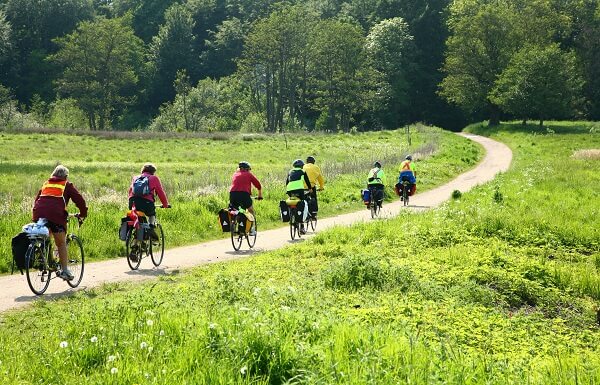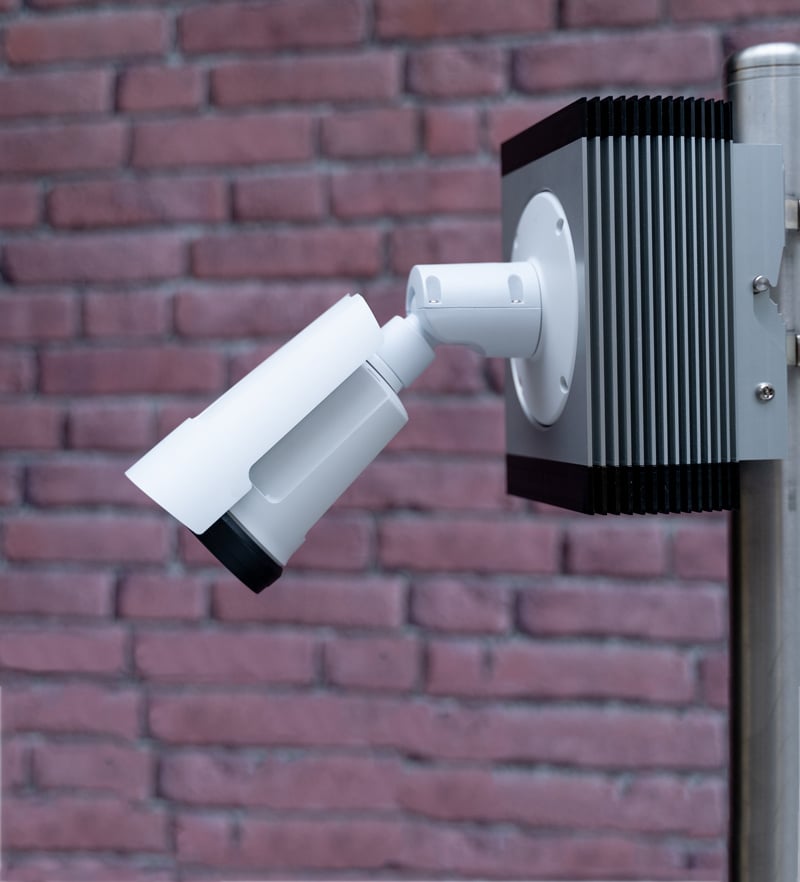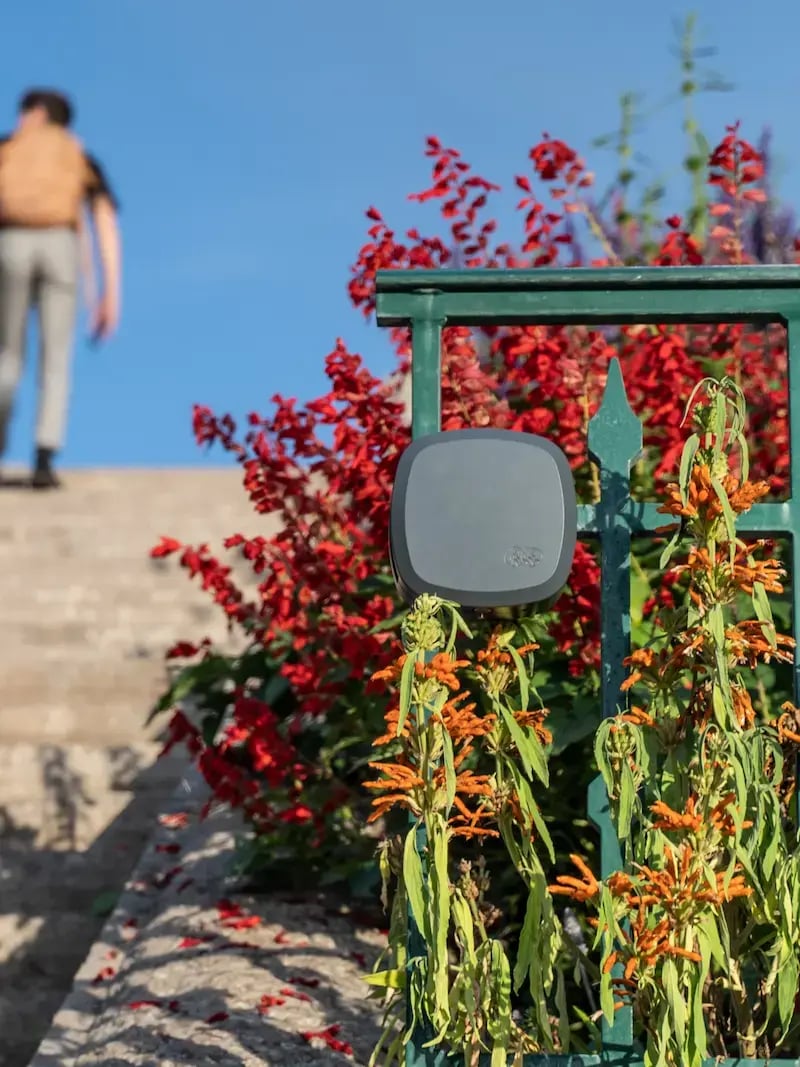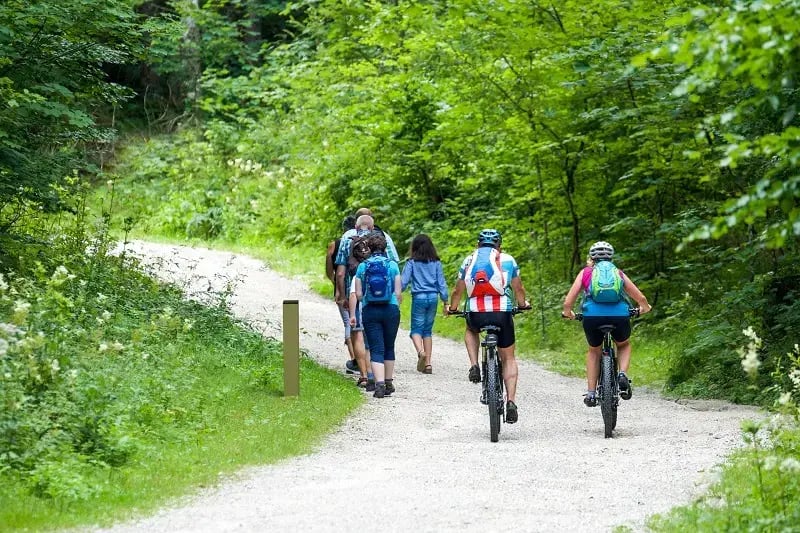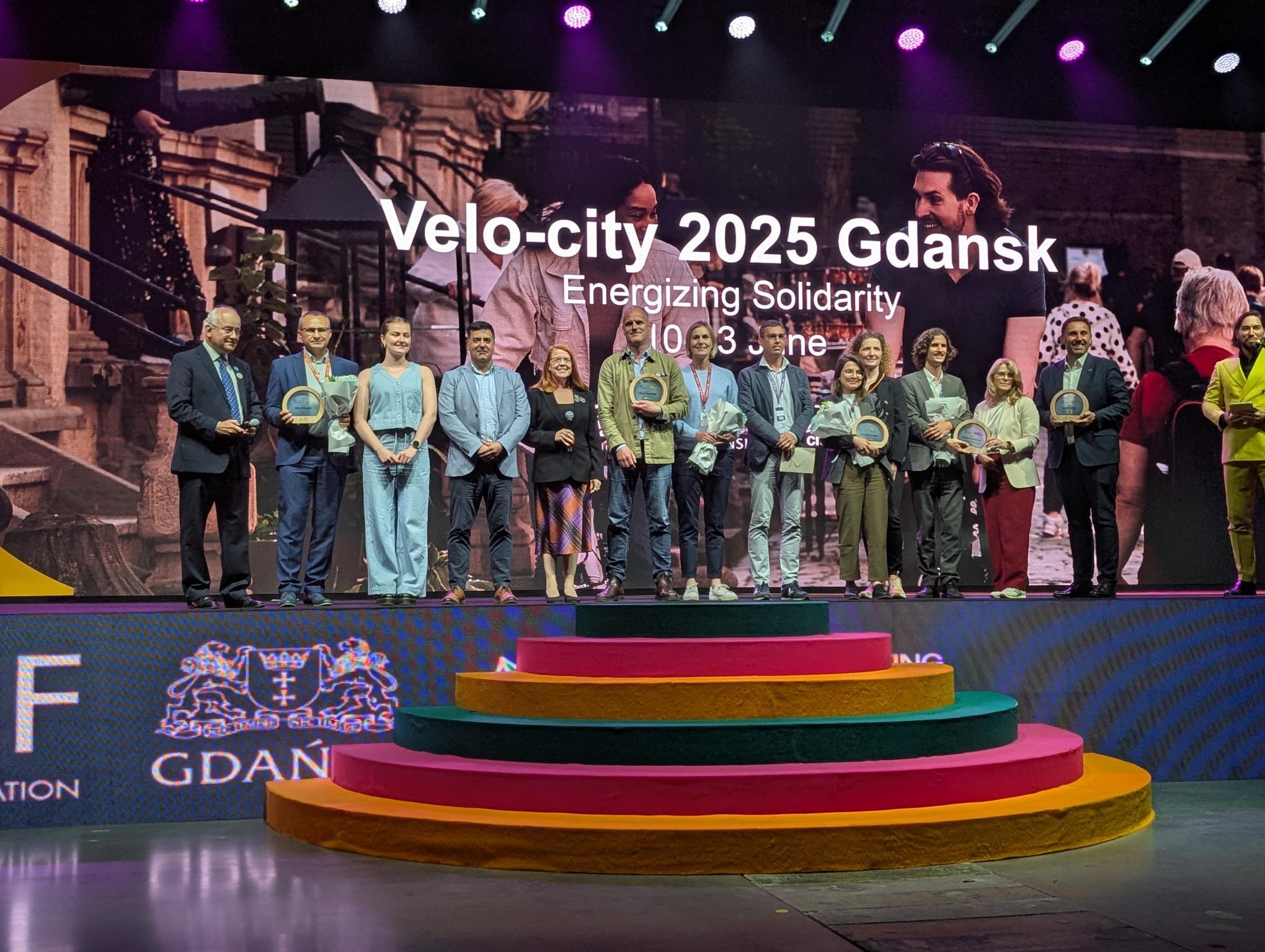Here is a summary of the figures presented.
Double digit growth on all routes
The figures for the first half of the year analysed show double-digit growth rates compared to the pre-pandemic situation (2019). The traffic increase is between 10% (EuroVelo 7) and 45% (EuroVelo 17).
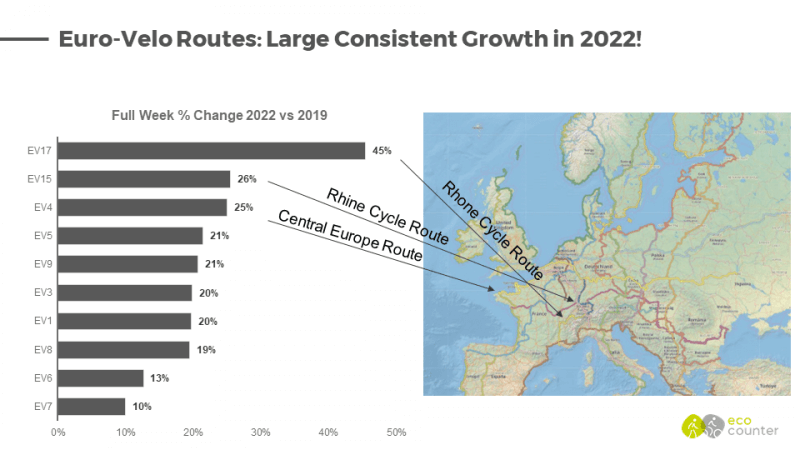
EuroVelo Barometer data presented at Velo-City Ljubljana – cycle traffic by route
It is also interesting to note that growth is strong both on weekdays and weekends, a trend that differs from 2020 and 2021 where the overall growth was mainly related to an increase in weekend traffic.
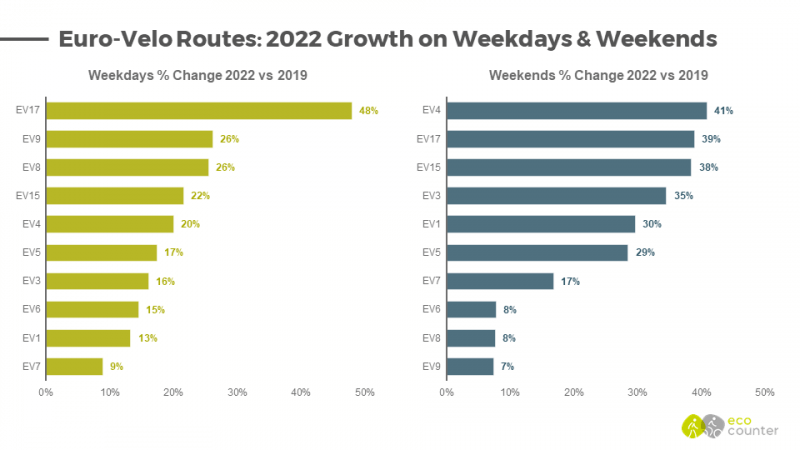
EuroVelo Barometer data presented at Velo-City Ljubljana – cycle traffic by route, weekdays vs. weekends
This new data suggests that both leisure and utility cycling appear to be growing on cycle tourism routes, making them effectively « multi-functional »!
2022 on its way to beat traffic records of 2020 and 2021
As we have seen previously, cycling traffic on weekend routes remains at a level as high as or higher than in 2020/2021. Weekday cycle traffic is again on the increase: it is considerably higher than in previous years, including 2019.
Below is an example of the traffic trend on the EV17 route. The increase in ridership can be clearly seen year after year, and the distribution of this increase, hour by hour on weekdays. Note: a peak in ridership that doubles at the end of the day in 2022, underlining both the utilitarian and recreational use of the route.

Some examples of cycling progress
For the first time, the local authorities owning the data have also agreed to share key figures from individual count locations (and not just aggregated data as previously).
This new data has enabled the ECF and EuroVelo teams to study the correlation between usage levels and route development level. Here are some examples:
 – Salernes, east of Aix-en-Provence is located on the Mediterranean Route (EuroVelo 8). The increase in visitor numbers is 14% in 2020, 47% in 2021 and an impressive +91% for the first half of 2022 (compared to 2019). According to Rémi Barlet, from the Var Department, these good figures are due to the « the rise of the EV8 as a major support facility for cycling » in the region.
– Salernes, east of Aix-en-Provence is located on the Mediterranean Route (EuroVelo 8). The increase in visitor numbers is 14% in 2020, 47% in 2021 and an impressive +91% for the first half of 2022 (compared to 2019). According to Rémi Barlet, from the Var Department, these good figures are due to the « the rise of the EV8 as a major support facility for cycling » in the region.
– The Coulée d’Oc site, to the north of Bordeaux, is located on the Pilgrims’ Route (EuroVelo 3). It too has recorded an increase of 31% in 2020, 80% in 2021 and 79% to date in 2022, again in comparison with the same period in 2019. For Stéphane Bauchaud of the Charente Department, « paved site, separated from traffic, that provided an ideal [cycling] area during deconfinement« .
– The Rorum site in Sweden, on the Baltic Sea Cycle Route (EuroVelo 10) has seen substantial increases of 31% in 2020, 27% in 2021 and 14% in 2022 to date compared to 2019. The explanation given by a representative of the Swedish region of Skåne is that « Sweden’s third national bicycle route opened in the summer of 2019, Sydkustleden. That route was the “missing link” between Sydostleden and Kattegattleden. »
– The Hakamaa site in Finland, on a utility route connecting the suburbs of Oulu which is also part of EuroVelo 10, showed traffic increases of 24% in 2020, 16% in 2021 and 23% in 2022 compared to 2019. According to Harri Vaarala from the city of Oulu, « [growth] can be easily explained by the changes in weather conditions. Also the infrastructure, baana = cycling superhighway« .
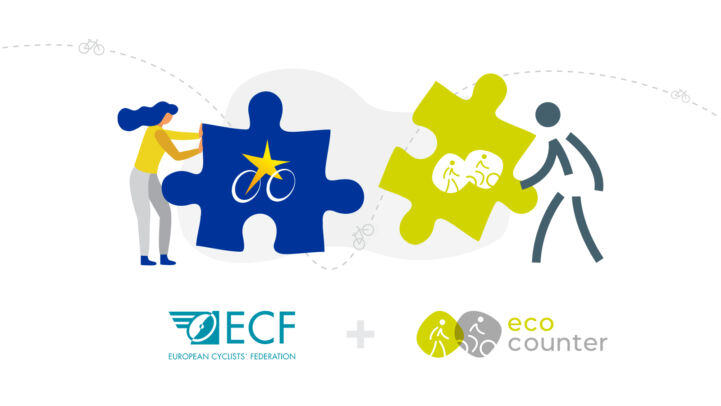
ECF / Eco-Counter partnership
Information on the analyses and the partnership
This analysis of the EuroVelo network started with a partnership between Eco-Counter and the European Cyclists’ Federation (ECF). The two organisations have joined forces to work closely together on the collection, analysis and reporting of data relating to the EuroVelo network.
The aggregated results on the use of the EuroVelo network are based on a sample of 170 automatic counters spread over the network.
For the sample, we selected counters for which we found a minimum level of representativeness, both in terms of number of counters and number of countries along the represented route. This is currently the case for EuroVelo routes 1, 3, 4, 5, 6, 7, 8, 9, 15 and 17.
In the future, we hope to be able to expand this sample and make it even more representative, as more counters are placed along the routes.

